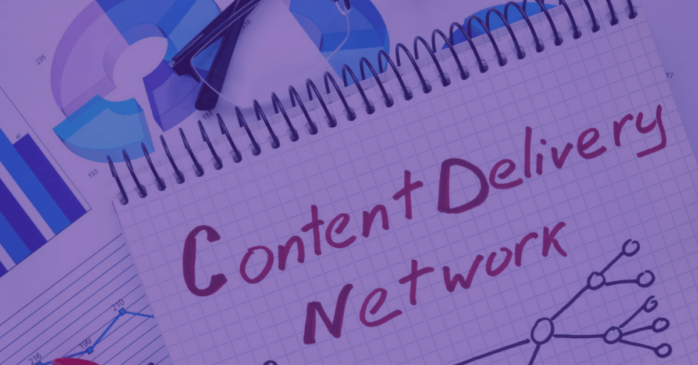One of the most important factors you should consider when creating a website is its speed. It will determine its position on search engines. In this case, the choice of hosting is important, as well as many details. In order not to lose visitors, readers and customers you should do everything to improve the speed. In this way, you will make a strong professional impression.
Don’t forget that Google pays a lot of attention to speed when ranking your website. If you don’t want the user to change his mind very quickly after visiting your website and go to a competitor’s site. Check your site speed. If you’re not happy with what you see, apply some of our tips.
1. Image and video optimization

Did you know who is the main culprit of increased loading time of your website? In most cases, these are precisely the images and videos, because they take up the most space on your platform. There are two factors involved. The first factor represents the size of each element on the website, and the second factor is the total number of assets that the page must load. Your task is to correct it. If you are determined to address these factors, you need to reduce the size of your media files or images.
There is no need to upload full-size images, as it is enough that the photo conforms to the design parameters. Anything beyond that takes up too much space and also spoils the website design. Best to stick to JPG. This format is the most popular choice for a reason. It maintains image integrity while saving you space. Another great way to correct media properties is to compress all photos. Whether they are the right size or not, we believe there are a few more photos that are larger than they should be.
However, make sure they are all compressed as this will significantly reduce the file size and give you a faster website speed. There are many tools you can use for this purpose. Do the same with videos, especially high definition videos. Finally, pay attention to the number of videos and photos. If you’ve corrected everything and your website is still slow, you probably have too much content like this. The more content you upload to your website, the longer it will take to load. Be aware of the size of all assets and find a balance between aesthetics and user experience.
2. Reduced server response time
The more server resources you use, the slower your website will be over time. Fortunately, you can fix this situation if you follow our advice. The key is to improve the quality and scope of your web hosting. Although this means investing more money, you won’t regret it. For example, delete any plugins you don’t need. They have a big impact on your website’s performance, and worst of all, they reduce its security.
It is enough to check the site once a month and clean all unnecessary files. Of course, don’t do it randomly, but select them wisely. After each cleanup, check server performance to make sure you’ve deleted everything you need to. There are tools that will help you find problematic files, i.e., those files that directly affect website speed.
3. Use the Cloud Content Delivery Network

By adopting a CDN, you enable your users to distribute content without delay. That is why an increasing number of companies use this service, because it provides them with numerous advantages. According to the software energies behind agilecdn.cloud you can globally accelerate your business with the help of AgileCDN. While speed and seamless content delivery are primary, there’s a lot more that a CDN can offer you. For example, reduced server load frees up website capacity and thus reduces bandwidth. Another advantage is data analytics. Analytics is useful to you for a number of reasons, primarily because it enables you to make good decisions. You will have full insight into load statistics, capacity per user, popularity of certain content as well as many other useful information.
It also eliminates the possibility of frequent problems related to sound, screen, etc. With this service, you can be sure that your website is safe, because it will provide you with a powerful defense against cyber attacks. A CDN improves content availability by eliminating pressure on origin servers. With it, you can forget about website downtime and bad consumer experience.
4. Do a speed test regularly
If you plan to work on maintaining your website, you must always have feedback. That way you will know if you are going in the right direction and how successful your strategy is. One of the sure ways to get an insight into website performance is to run a speed test. It will show you the current speed of the website, as well as any problems that your website may have. Fortunately, there are plenty of tools you can take advantage of.
All you have to do is enter the URL and run the test. After completing the test, you will have a care score and all other information. One of the most useful features is the problem spotting diagram, and most tools have it. Based on it, you will know how much time visitors spend on each file and component.
5. Find the right hosting

Don’t do like most website owners who choose hosting based on price. The cheapest option will suit you only at the beginning, and very soon you will start to see all its flaws. In fact, such options are useless and can only threaten the functioning of your website or your business.
Do not save money on hosting, because it will determine the speed of the website. It is best to use dedicated hosting, because you will not depend on others. All responsibility is solely yours and you will have much more free space.
Conclusion
Considering that technology is constantly advancing, users do not want to compromise when it comes to website speed. If you want to get them interested in your content, you can’t keep them waiting for the information they need. Adjust the website elements to the user’s requirements, because the speed is increasing day by day. Your business needs to keep up with this pace.
The post 5 Simple Ways to Improve Your Website Speed appeared first on FotoLog.
from FotoLog https://ift.tt/ubUQwGf
via IFTTT


0 Comments